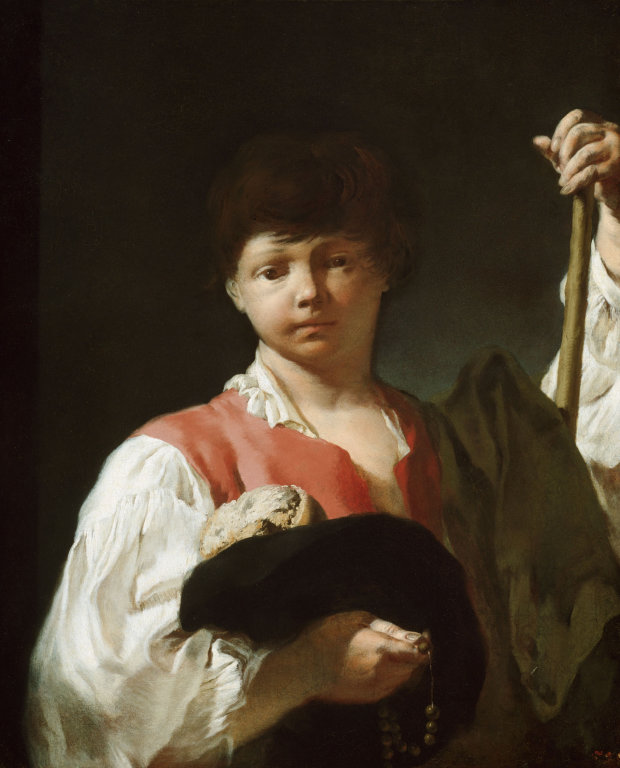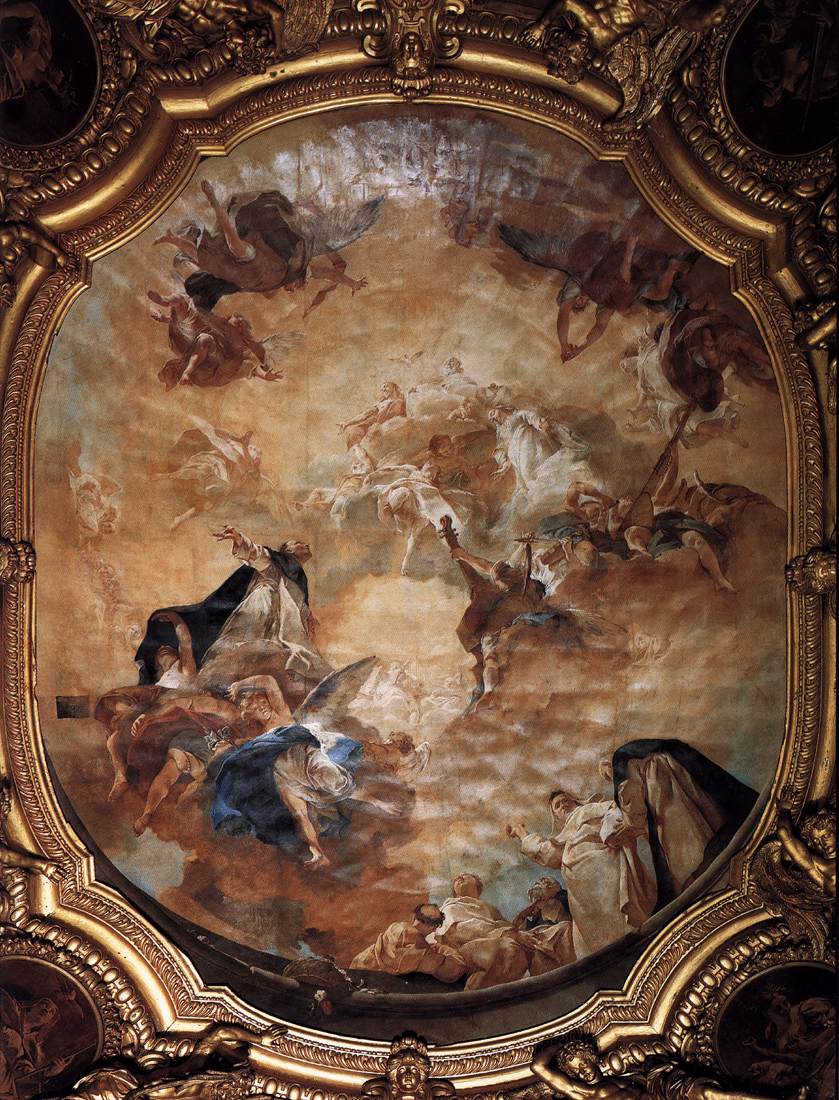By Anne Leader
Venetian painter Giovanni Battista Piazzetta died on 29 April 1754. Known for his religious subjects and genre scenes, Piazzetta had a style and working method that differed greatly from his contemporaries. He worked slowly and painstakingly, unlike his peers who were known for their spontaneity, intense color, and decorative qualities. A Swedish visitor to Venice called Piazzetta a “snail.” Despite his slow technique, by the 1740s Piazzetta ran a large and productive studio, collaborating with students on large projects. His work reached a wide European audience through numerous engravings made after his compositions.
Reference: Sergio Claut and Adriano Mariuz. “Piazzetta.” Grove Art Online. Oxford Art Online. Oxford University Press.
The Beggar Boy (The Young Pilgrim), 1738/39, oil on canvas, Art Institute of Chicago, Charles H. and Mary F. S. Worcester Collection, 1930.747
Boy Holding a Pear, ca. 1740, black and white chalk on blue-gray paper, Los Angeles, J. Paul Getty Museum, 86.GB.677.
Saint Stephen, late 1730s, black and white chalks on (faded) blue laid paper, Washington, D.C., National Gallery of Art, Bequest of Lore Heinemann in memory of her husband, Dr. Rudolf J. Heinemann, 1997.57.6
Portrait of Giovanni Battista Piazzetta by Johann Gottfried Haid, early 18th century, mezzotint, New York, The Metropolitan Museum of Art, Funds from various donors, 2011
The Virgin Appearing to St Philip Neri, 1725, oil on canvas, Santa Maria della Consolazione (Fava), Venice
Three Dominican Saints, 1738, oil on canvas, Santa Maria del Rosario (Gesuati), Venice
The Glory of St Dominic, 1727, oil on canvas, Basilica dei Santi Giovanni e Paolo, Venice
Judith and Holofernes, c. 1745, oil on canvas, Scuola Grande dei Carmini, Venice








